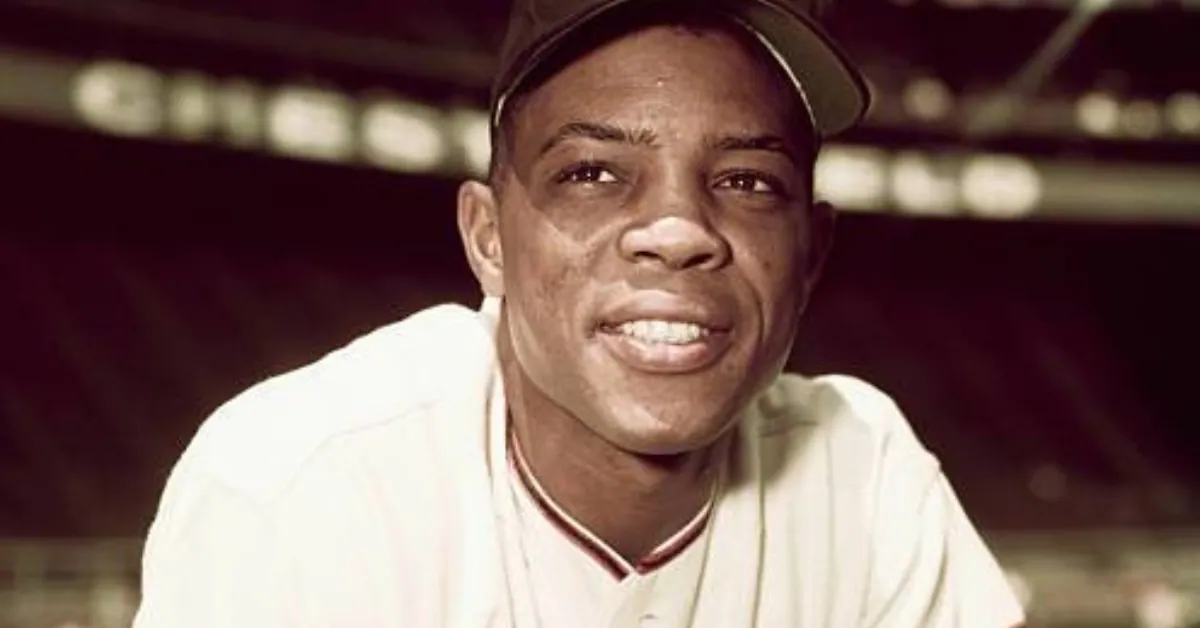Willie Mays, the legendary baseball player, passed away on June 18, 2024, at the age of 93. Willie Mays net worth of $10 million, he had a legendary MLB career, playing 22 seasons primarily for the New York/San Francisco Giants and briefly with the New York Mets. Born on May 6, 1931, Mays was 5 feet 10 inches (178 cm) tall. He was married twice and had one child. His passing marked the end of a remarkable life and career, leaving behind a lasting legacy as one of the greatest baseball players of all time.
| Attribute | Details |
|---|---|
| Date of Birth | May 6, 1931 |
| Age | 93 (at the time of passing, June 18, 2024) |
| Birthplace | Westfield, Alabama, USA |
| Residence | San Francisco, California, USA (at the time of his death) |
| Country | United States |
| Profession | Baseball Player (Hall of Famer) |
| Education | Attended Trinity High School |
| Father | William Mays Sr. |
| Mother | Annie Satterwhite Mays |
| Nationality | American |
| Siblings | 2 siblings |
| Brother | Felix Mays (older brother) |
| Religion | Christianity |
| Horoscope | Taurus |
| Weight | Approx. 185 lbs (83 kg) during his playing career |
| Willie Mays Net Worth | Estimated to be around $100 million (before his passing) |
Willie Mays Net Worth
Willie Mays, often regarded as one of the greatest baseball players of all time, built a considerable fortune over his illustrious career. His net worth is estimated to be around $8 million at the time of his passing in 2024. While Mays’ wealth is not among the highest in sports, it reflects the lasting impact he had on the game of baseball and the opportunities he capitalized on both during and after his playing career.
Breakdown of His Earnings
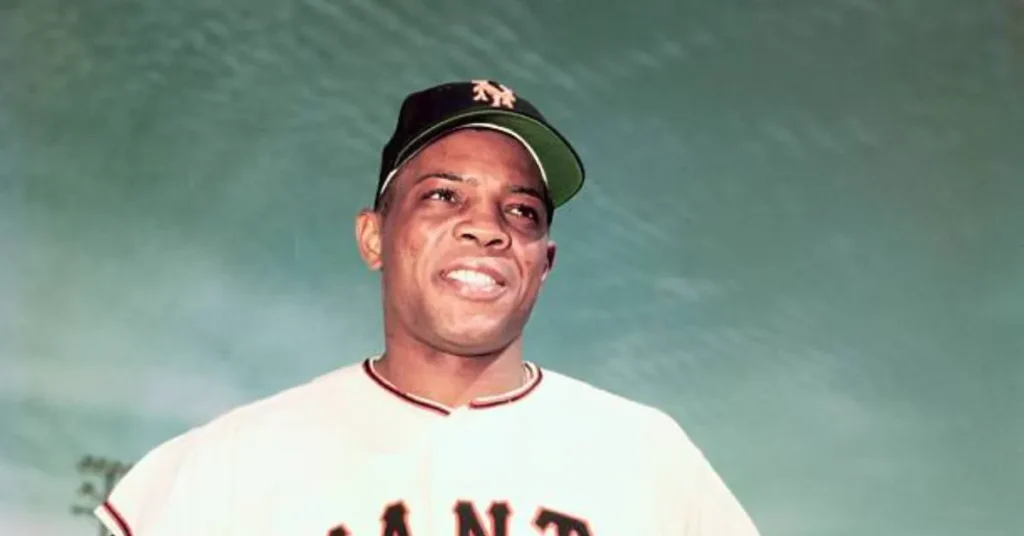
Mays’ earnings came from a combination of his player contracts, endorsement deals, and business investments.
Player Contracts
Mays played 22 seasons in Major League Baseball, primarily with the San Francisco Giants, where he earned approximately $1.1 million in salary over the course of his career. His highest annual salary was $180,000 in 1973, a substantial amount at the time, which would be the equivalent of about $1.2 million today when adjusted for inflation. While his earnings as a player were not as astronomical as those of today’s stars, Mays’ skill and popularity still ensured that he had a lucrative career.
Endorsements
In addition to his playing salary, Mays benefited from several endorsement deals with major brands, such as Coca-Cola, Wheaties, and Ford. These deals added a significant amount to his wealth, capitalizing on his status as one of the game’s brightest stars. Mays’ magnetic personality and iconic status in baseball made him an ideal partner for these companies, increasing his financial success off the field.
Investments
After his playing days, Mays continued to invest in his wealth. Though there are limited public details about his specific investments, like many former athletes, Mays would have likely focused on securing his financial future through various channels such as real estate or other business ventures. His financial legacy also includes memorabilia and endorsements that continued to generate revenue long after he retired from the game.
How His Wealth Reflects His Impact on the Game
Willie Mays’ net worth is a testament to the immense impact he had on baseball, both on and off the field. His combination of skill, athleticism, and marketability made him not just a baseball legend but also a commercial powerhouse. Despite playing in an era where salaries were much lower than today’s, Mays’ wealth was built on the foundation of his incredible contributions to the game, including two MVP awards, 12 Gold Glove honors, and 24 All-Star appearances.
His wealth also reflects the significant cultural influence he wielded. Mays was a trailblazer for African-American players in Major League Baseball and an iconic figure in the sport’s history. His endorsement deals were not only a reflection of his talent but also his ability to resonate with the public, making him one of the first athletes to truly maximize commercial opportunities in the way that modern athletes do today.
Recent posts
Willie Mays Career Stats
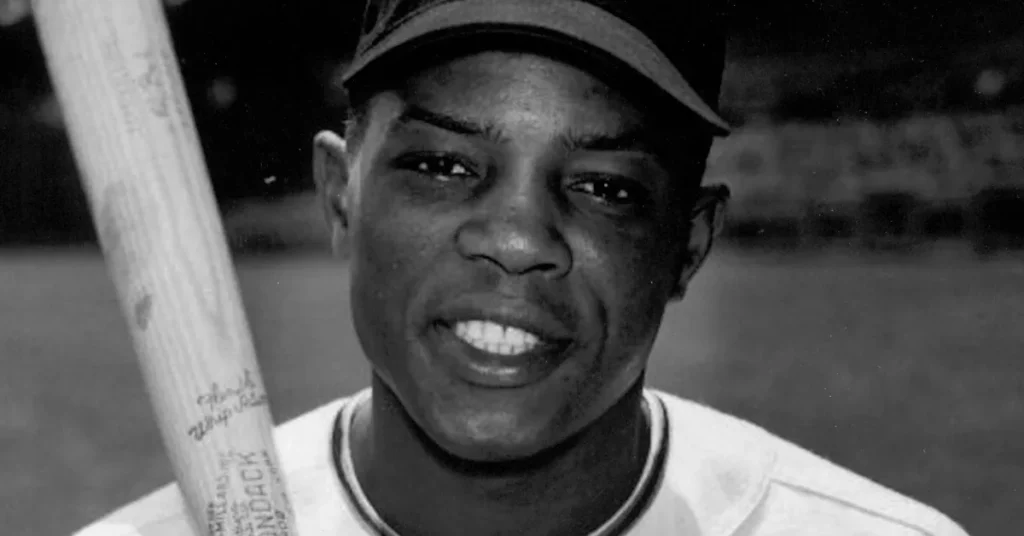
Willie Mays is widely regarded as one of the most complete players in baseball history, and his career statistics reflect his all-around brilliance. Over the course of his 22-season career, Mays compiled a staggering array of numbers that solidified his place as one of the all-time greats. His stats showcase not just his offensive power but also his elite defensive abilities, making him one of the most well-rounded players the game has ever seen.
Key Career Statistics
Mays’ career was marked by a consistent and dominant presence at the plate and in the field. Below are some of his most notable statistics:
- Batting Average: .302
Mays boasted a career batting average of .302, which speaks to his consistency and ability to hit for both average and power. This high average places him among the all-time elite hitters in MLB history. - Home Runs: 660
With 660 career home runs, Mays ranks 6th on the all-time list. His power, combined with his speed, made him a constant threat at the plate. Mays was known for his ability to hit home runs at crucial moments, making him a feared slugger throughout his career. - RBIs (Runs Batted In): 1,903
Mays also drove in an impressive 1,903 RBIs over his career. This ability to bring in runs helped his teams consistently compete at the highest level, contributing to his reputation as one of the most valuable players in the game. - Stolen Bases: 338
A testament to his speed, Mays stole 338 bases during his career. His base-running ability allowed him to be a constant threat on the basepaths, adding another dimension to his game. Mays was one of the first power hitters who could also steal bases with ease.
Record Achievements and Hall of Fame Induction
Mays’ career is filled with record-breaking achievements, and his induction into the Baseball Hall of Fame in 1979 was a natural acknowledgment of his dominance. Here are a few key records and accomplishments:
- Gold Glove Awards: 12
Mays was also known for his incredible defensive abilities, earning 12 Gold Glove awards throughout his career. His famous over-the-shoulder catch in the 1954 World Series is one of the defining moments of his defensive excellence. - MVP Awards: 2 (1954, 1965)
Mays won the National League MVP award twice during his career. These awards highlighted his ability to dominate both offensively and defensively, making him one of the most complete players in the history of the game. - All-Star Appearances: 24
Mays was selected to 24 All-Star Games, further solidifying his status as one of the premier talents in MLB history. - World Series Championship: 1 (1954)
Mays led the San Francisco Giants to a World Series championship in 1954, an achievement that cemented his legacy as a postseason performer.
Comparison to Other Baseball Legends
When comparing Mays to other baseball legends, it’s clear that his career stands among the best of all time. Mays is often mentioned in the same breath as Babe Ruth, Willie Stargell, and Hank Aaron due to his blend of power, speed, and defense.
- Power and Speed Combo: Like Hank Aaron, Mays was a rare combination of power and speed. While Aaron finished his career with more career home runs (755), Mays’ 660 homers, coupled with his 338 stolen bases, make him one of the few players in history to excel in both categories.
- Defensive Excellence: Mays is often regarded as one of the best defensive center fielders of all time, with a combination of range, arm strength, and instincts that made him a standout in the field. His 12 Gold Gloves are a testament to his superior defense, a distinction that sets him apart from other legends who may not have had the same defensive prowess.
- Legacy: Like Babe Ruth, Mays’ influence transcended the field. While Ruth revolutionized the game with his home run power, Mays did so with his all-around play, setting a new standard for what a complete player could be. Mays, like Ruth, helped shape the modern game of baseball, inspiring generations of players who sought to emulate his style.
Willie Mays Wife
Throughout his life, Willie Mays was married twice, and his personal life, particularly his relationships, was intertwined with his illustrious baseball career. His wives were both supportive figures during different phases of his life, and their stories reflect the challenges and joys that came with being married to one of the most famous athletes in history.
Information on His Marriages
Willie Mays’ marriages were marked by both love and challenges, as his career took him to cities across the country and kept him in the public eye.
- First Marriage:
Mays’ first wife was Marguerite Wendell, and they married in 1956. The couple had a son together, Michael Mays, but their marriage ended in divorce in 1963 after seven years. The pressures of Mays’ demanding baseball career, along with the challenges of maintaining a private life under the public spotlight, led to the dissolution of their marriage. - Second Marriage:
After his divorce from Marguerite, Mays married Amanda (Mays) in 1980. The couple remained together for the rest of Mays’ life. Amanda was known to be a private figure, and she largely kept out of the public eye, but she was a supportive partner to Mays during his later years. Their marriage was a source of stability for Mays, especially as he transitioned from an active player to a retired icon of the game.
Details About His Spouse
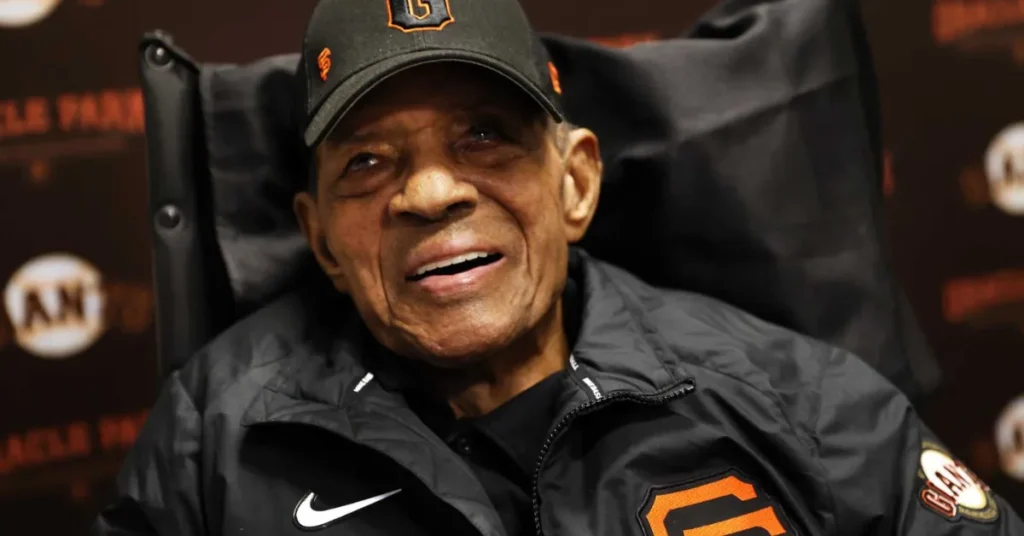
- Amanda Mays:
Mays’ second wife, Amanda, was by his side for decades, and their marriage was a testament to his ability to find companionship and love after the ups and downs of his earlier life. Amanda remained relatively private and out of the spotlight, which helped Mays maintain some degree of normalcy and privacy in his later years. - Marguerite Wendell:
His first wife, Marguerite, was part of Mays’ life during the early years of his professional baseball career. They were married while Mays was in the early stages of his stardom, and they had a son together, Michael Mays. Despite the end of their marriage, Marguerite remained an important part of Mays’ early life.
How His Personal Life Intertwines with His Baseball Career
Mays’ personal life played a significant role in shaping his public persona and his career. His first marriage to Marguerite coincided with the height of his baseball stardom, when Mays was becoming a household name and a sports icon. The pressures of his career likely strained their relationship, and while Mays never publicly discussed the details of their split, his divorce marked a challenging chapter in his life.
After his second marriage to Amanda, Mays was able to focus more on his post-baseball life. The couple shared a relatively private existence, which allowed Mays to step back from the intense spotlight that had surrounded him during his playing years. This partnership provided stability, and Amanda was a source of support during the later years of his life, including after his retirement from baseball.
Willie Mays Age and Height
Willie Mays, one of the most iconic figures in baseball history, had an extraordinary career that spanned over two decades. His age and physical attributes played a significant role in shaping his style of play, which was a blend of power, speed, and skill.
Current Age
Willie Mays was born on May 6, 1931. He passed away on June 18, 2024, at the age of 93. Mays lived a long and fulfilling life, leaving behind a legacy that continues to inspire generations of baseball players and fans alike. His contributions to the game of baseball and his remarkable achievements have cemented his status as one of the greatest athletes to ever play the sport.
Height and How It Contributed to His Playing Style
Mays was 5 feet 10 inches (178 cm) tall, which was considered an average height for athletes in his era, though it provided him with a solid balance of power and agility. His height allowed him to possess a combination of speed and strength that made him an exceptional center fielder and a formidable batter.
- Defensive Excellence:
Mays’ height was an asset in the outfield, especially in center field, where he excelled defensively. His height and athletic build gave him the ability to cover a lot of ground, making him one of the best defensive players of his time. His legendary over-the-shoulder catch in the 1954 World Series, one of the most iconic moments in baseball history, was a perfect example of how his physical attributes helped him make plays that others could not. - Offensive Power:
On the offensive side, Mays’ height and build helped him generate the power needed to hit for both average and home runs. While he wasn’t an overly tall or bulky player like some of his contemporaries, his compact build, combined with his excellent hand-eye coordination, allowed him to drive the ball out of the park and also use his legs to contribute with stolen bases. His 660 career home runs were a testament to his power, which was enhanced by his athleticism. - Base Running and Speed:
Mays’ combination of speed and height allowed him to steal bases effectively, finishing his career with 338 stolen bases. His agility, coupled with his quick reflexes, made him an outstanding base runner, often taking advantage of defensive lapses and creating opportunities for his team.
Willie Mays Children
Willie Mays had one child, a son named Michael Mays, born from his first marriage to Marguerite Wendell. Michael’s life, like his father’s, has been marked by the legacy of one of baseball’s greatest players, although he has generally stayed out of the public spotlight. Mays’ family life, while not as widely known as his baseball career, played an important role in shaping the man behind the athlete.
Information About His Children
Michael Mays, Willie’s only child, was born during Mays’ first marriage. Little is known publicly about Michael’s life, as he has largely kept his personal affairs private. Michael grew up during his father’s illustrious baseball career, and though his life has been more private, he no doubt carried the weight of his father’s legacy. There are no reports of Michael following in his father’s athletic footsteps or making a public career out of sports, as he has remained out of the limelight compared to other children of famous athletes.
Impact on His Family Life
Willie Mays’ family life, particularly his relationship with his son Michael, was undoubtedly shaped by his demanding baseball career. As one of the most recognizable athletes in the world, Mays was often on the road, traveling for games and team commitments. This meant that much of the time Michael spent with his father was during the off-season or rare moments when Mays was home. Despite the challenges of balancing family with an extraordinary career, Mays’ second marriage to Amanda provided a stabilizing force in his life, allowing him to find comfort and support after the pressure of his playing days.
Though his first marriage ended in divorce, Mays’ relationship with his son Michael remained a part of his personal journey. Mays always spoke about the importance of family, and while much of his life was consumed by baseball, it was clear that his loved ones were a significant part of his life.
How His Legacy Continues Through His Family
Willie Mays’ legacy continues to impact his family, particularly through his son Michael. While Michael may not have pursued a public career in baseball or sports, Mays’ profound influence on him would have undoubtedly shaped the values and principles instilled in him. The Mays family has continued to honor his legacy, though much of their lives have remained private.
Mays’ legacy is not just confined to his records and Hall of Fame status but also in how he represented a new era of athletes, one that included breaking barriers and shaping the cultural identity of baseball. His impact on African-American players and his groundbreaking role in the civil rights movement are part of what his family carries forward. In addition, Mays’ achievements have helped pave the way for future generations of baseball players, including his own extended family, who may find inspiration in his story.
Willie Mays Death
Willie Mays, the legendary baseball player, passed away on June 18, 2024, at the age of 93. His death marked the end of a remarkable life and career that left an indelible mark on the game of baseball. Mays was celebrated not only for his exceptional talent but also for his contributions to the sport’s cultural and social development, making his passing a moment of reflection for fans worldwide. There have been no credible death rumors since his passing, as his death has been widely reported and confirmed by various reputable sources.
Current Status (If Alive, Any Death Rumors)
As of his passing on June 18, 2024, Willie Mays is no longer with us. His death was acknowledged across the sports world, as he was one of the most iconic and influential figures in baseball history. Prior to his passing, there were no significant rumors about his health or well-being that contributed to any uncertainty surrounding his status. In his later years, Mays had maintained a lower public profile, focusing on enjoying his retirement. The news of his death, however, was met with an outpouring of tributes from fans, teammates, and sports personalities who respected and admired him.
Plans for Future Memorials or Tributes
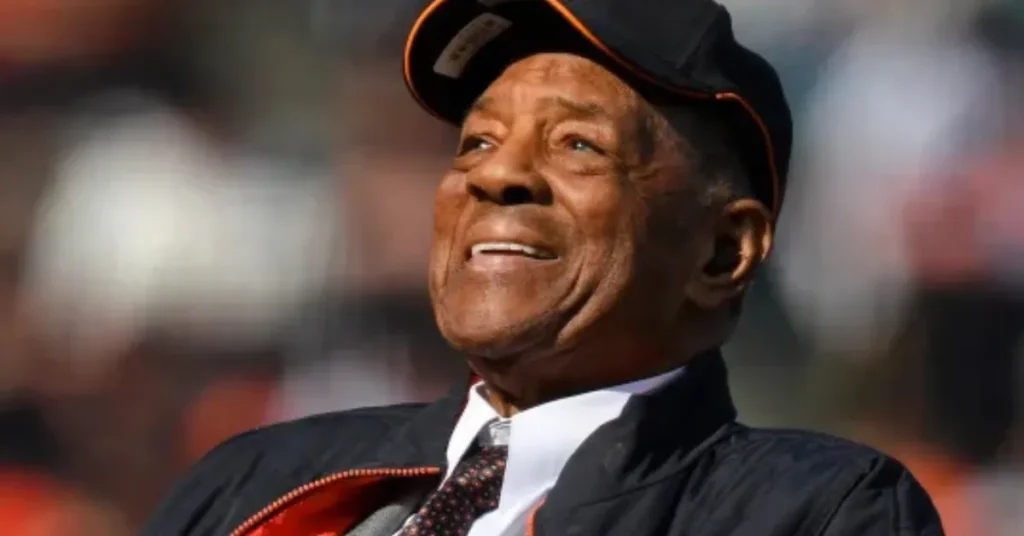
Given the immense legacy that Willie Mays left behind, plans for future memorials and tributes are likely to be extensive. While official tributes have not been fully outlined yet, the sports world, especially Major League Baseball, will almost certainly honor Mays in a variety of ways.
- Hall of Fame Recognition:
As a member of the Baseball Hall of Fame, Mays will likely continue to be honored with tributes in Cooperstown. His place in the Hall of Fame has ensured that his impact on the game will never be forgotten, and his legacy will be celebrated through various exhibits, events, and educational programs. - Retirement of His Number:
Mays’ iconic number 24 has already been retired by the San Francisco Giants, the team with which he spent the majority of his career. This number will likely continue to be a symbol of his greatness in both San Francisco and across the baseball world. The Giants may hold special events or ceremonies to commemorate his life and impact on the sport. - Tributes by Fans and Players:
In the years to come, we can expect fan gatherings, commemorative events, and tributes from current and former players honoring Mays’ legacy. Special moments, such as a “Willie Mays Day,” could be organized by the Giants or other baseball teams to keep his memory alive. Given his status as one of the game’s true legends, it’s also likely that teams and players will continue to wear patches or make public references to Mays during key anniversaries or special games. - Documentaries and Biographical Works:
As part of his lasting influence, documentaries, books, and other media about Mays’ life and career will likely continue to be produced. These works will ensure that future generations of baseball fans and athletes understand the depth of his contributions to the game and his role in the civil rights movement.
Frequently Asked Questions
Yes, Willie Mays served in the United States Army during the Korean War. His military service interrupted his baseball career for two years, but he returned to the game with renewed vigor.
Willie Mays’ legacy is marked by his combination of power, speed, and defensive excellence. He is often regarded as one of the greatest all-around players in baseball history, influencing generations of athletes and contributing to the integration of African-American players into Major League Baseball.
Yes, in February 2024, the San Francisco Giants honored Willie Mays by dedicating a day to him, known as “Willie Mays Day.” Additionally, the inaugural Willie Mays Open was held at Rickwood Field, celebrating Historically Black Colleges and Universities (HBCUs) and their contributions to baseball.
Willie Mays used his platform to advocate for civil rights, becoming a symbol of progress and equality in sports. His success in Major League Baseball during a time of racial segregation inspired many and contributed to the broader civil rights movement in the United States.
Conclusion
Willie Mays’ career and legacy are a testament to what it means to be a transcendent figure in both sports and society. His achievements on the field—ranging from his remarkable hitting ability to his unparalleled defensive prowess—solidified his status as one of the greatest baseball players of all time. However, Mays’ influence extends far beyond just his statistics or records. He was a trailblazer for African-American athletes in a time when racial barriers still loomed large in professional sports. His success on the field helped open doors for future generations of players, inspiring many to follow in his footsteps.
